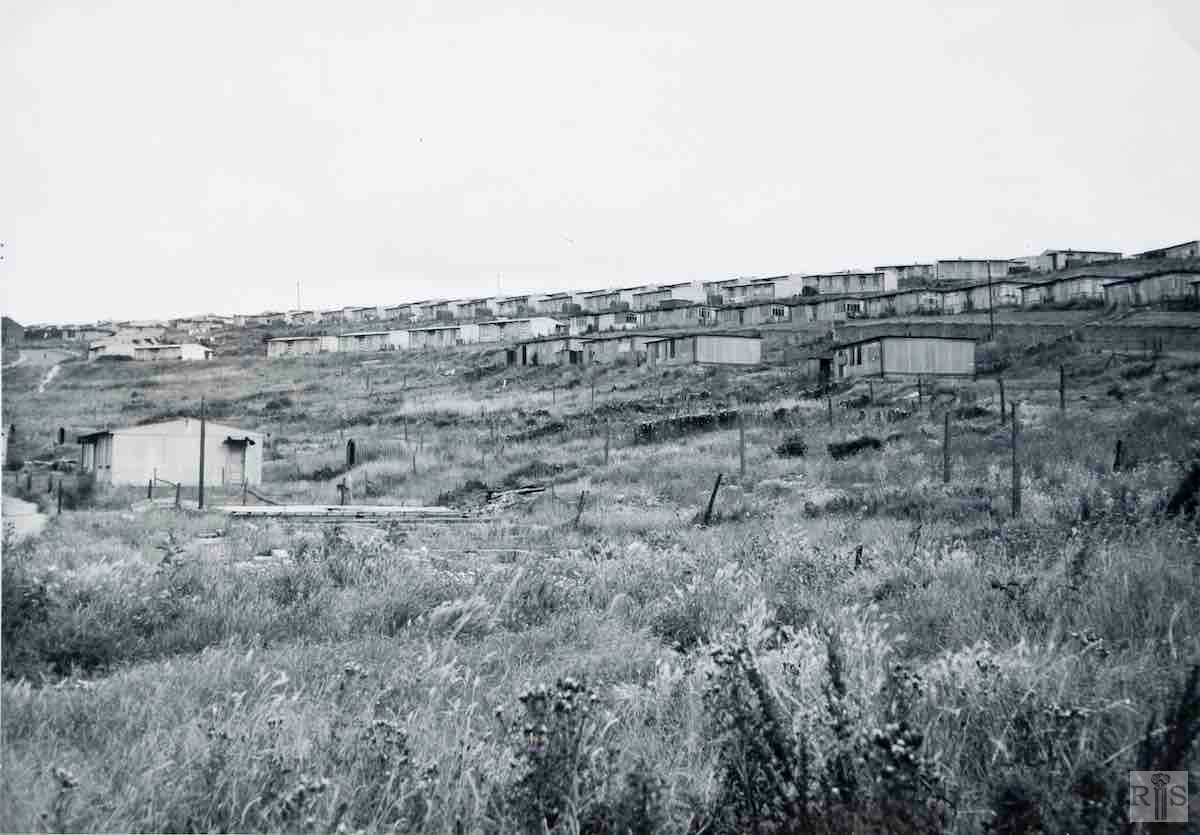
James Gray: Whitehawk Avenue, with a view to Findon Road and roads beyond up to Wilson Avenue. This shows the generous size of some of the gardens, not always appreciated by the tenants. jgc_23_118
2019: Gray’s photograph seems to have been taken from the junction of Whitehawk Avenue and Findon Road. Nothing remains from the original image. Whitehawk Way has now replaced Whitehawk Avenue. Findon Road has been shortened at its northern end into a cul-de-sac that no longer meets Whitehawk Way. This is the view from Whitehawk Way today showing Selmeston Place, built on the site of what was once the end of Findon Road. (Photographer: David Jackson)
James Gray: This large photograph, dating from 1932, shows the construction of the north-western side of Whitehawk Avenue. This formed part of the building of the extensive Whitehawk Estate, which occupied the early thirties. In addition to providing much-needed houses, it gave employment to a large number of men. After a comparatively short life of about fifty years the entire estate was redeveloped. Additional Information: Hod carriers and cloth caps. jgc_23_119
James Gray: This photograph shows houses on the lower south-eastern side waiting demolition. Many were empty, without windows or boarded up and all have since gone. jgc_23_120
2019: None of these houses in Whitehawk Avenue remains and the road has been renamed Whitehawk Way. (Photographer: David Jackson)
James Gray: These were built in the late 1940s as a temporary extension of the pre-war Whitehawk Council Estate. They were designed to have a life of about 10 years, and soon after that period had elapsed, their removal commenced. View from the foot of Findon Road with Nuthurst Road seen at the extreme left. Subsequently, this area was largely given over to ‘self-build’ schemes. Date of photograph – 20 July 1958. jgc_23_122
2019: Total change. Gray’s image shows post-war ‘prefabs’ on a rough grassland slope where now there are solidly built low-rise residential blocks set in a landscaped environment. The prefabricated houses were produced to deal with the acute post-war housing shortage. Most have long gone but they were iconic in their time. (Photographer: David Jackson)







